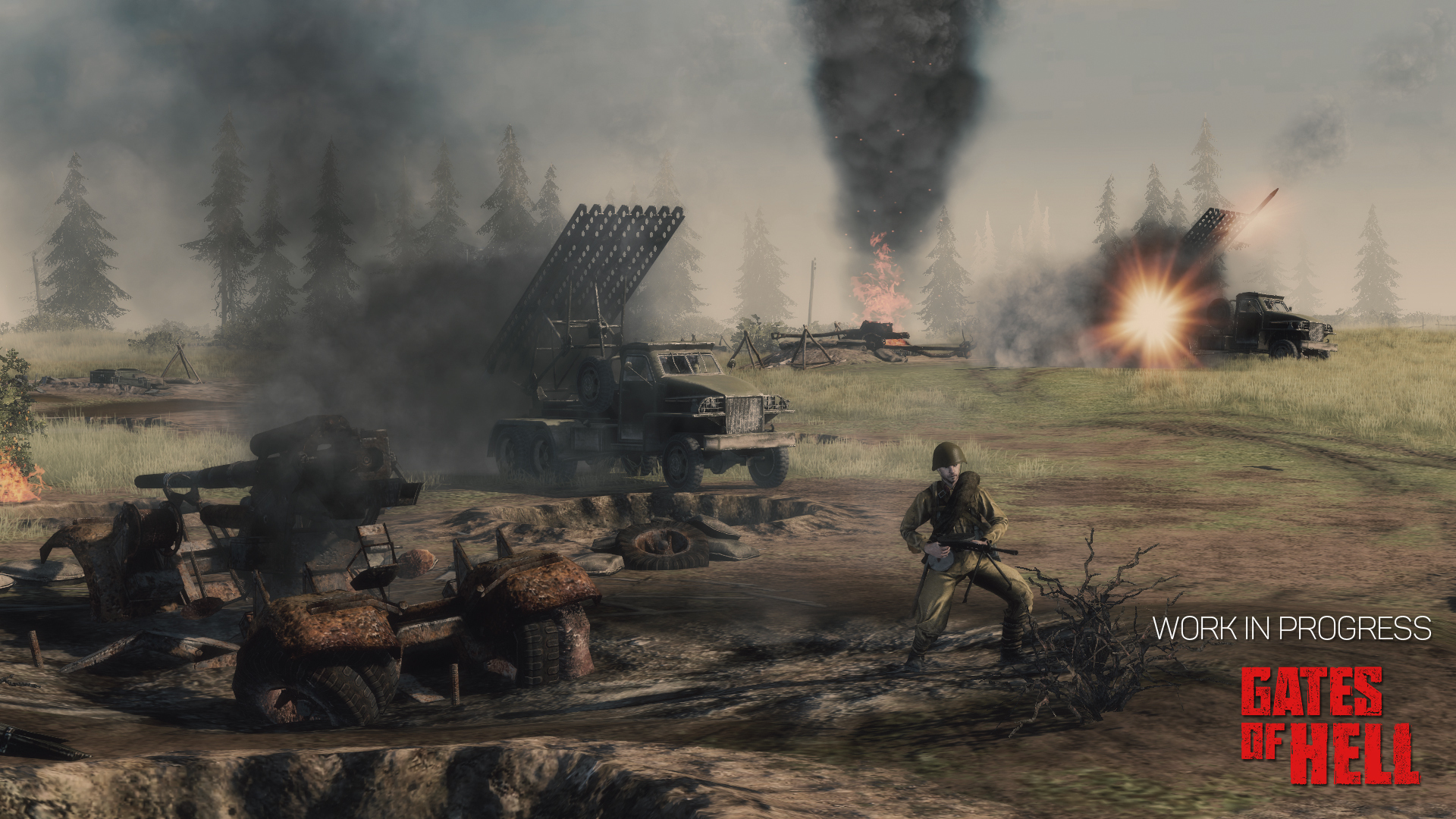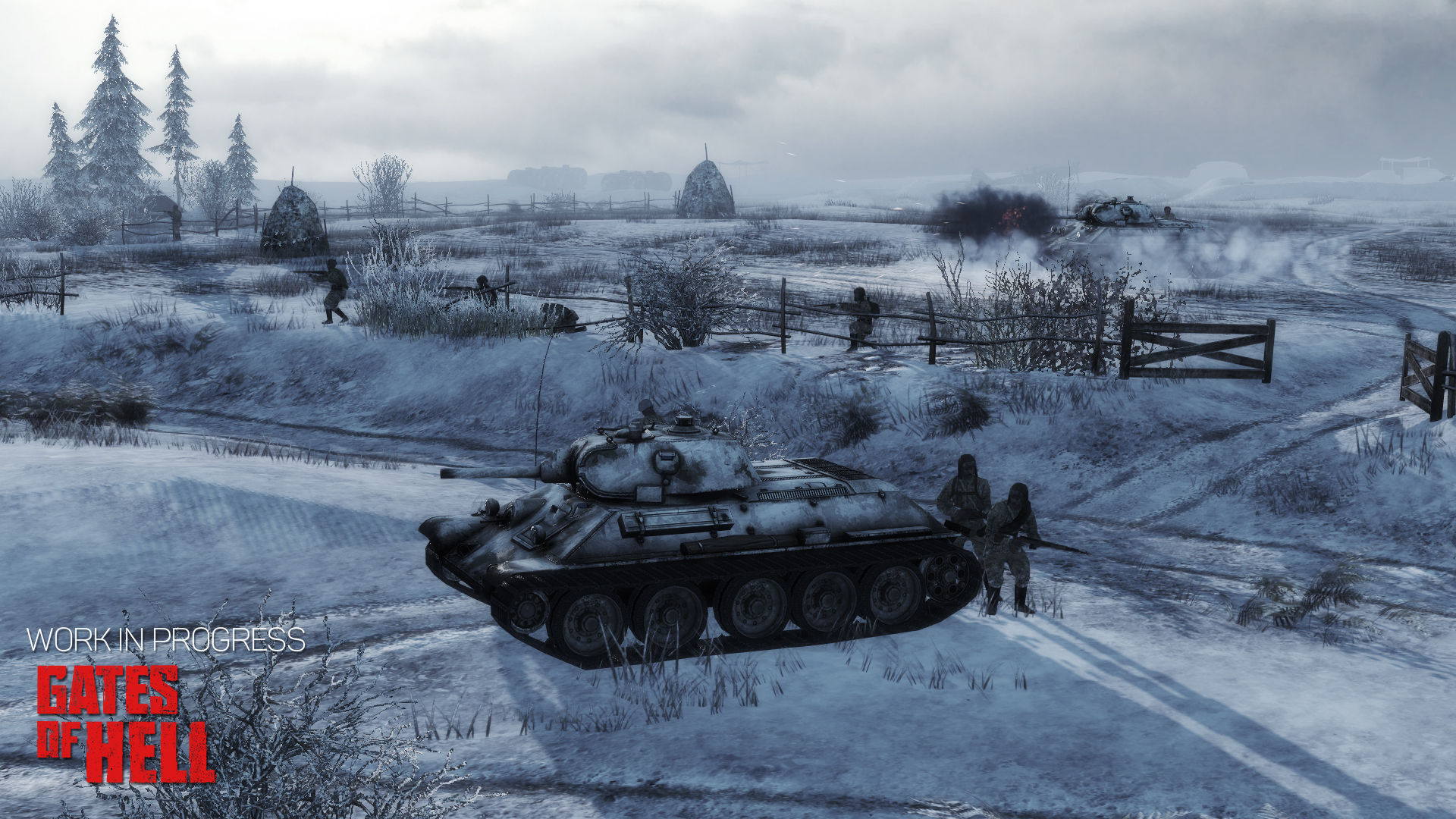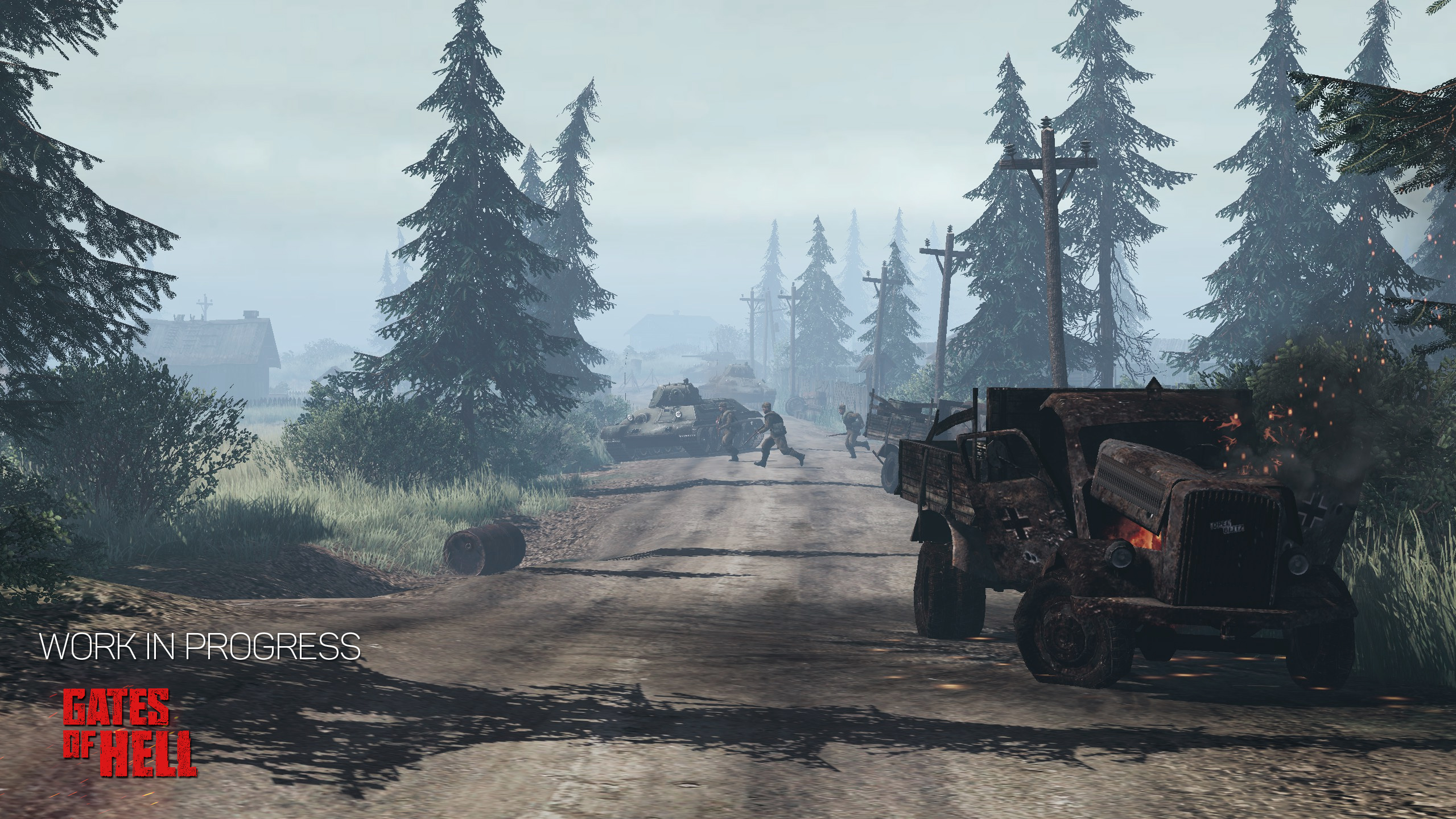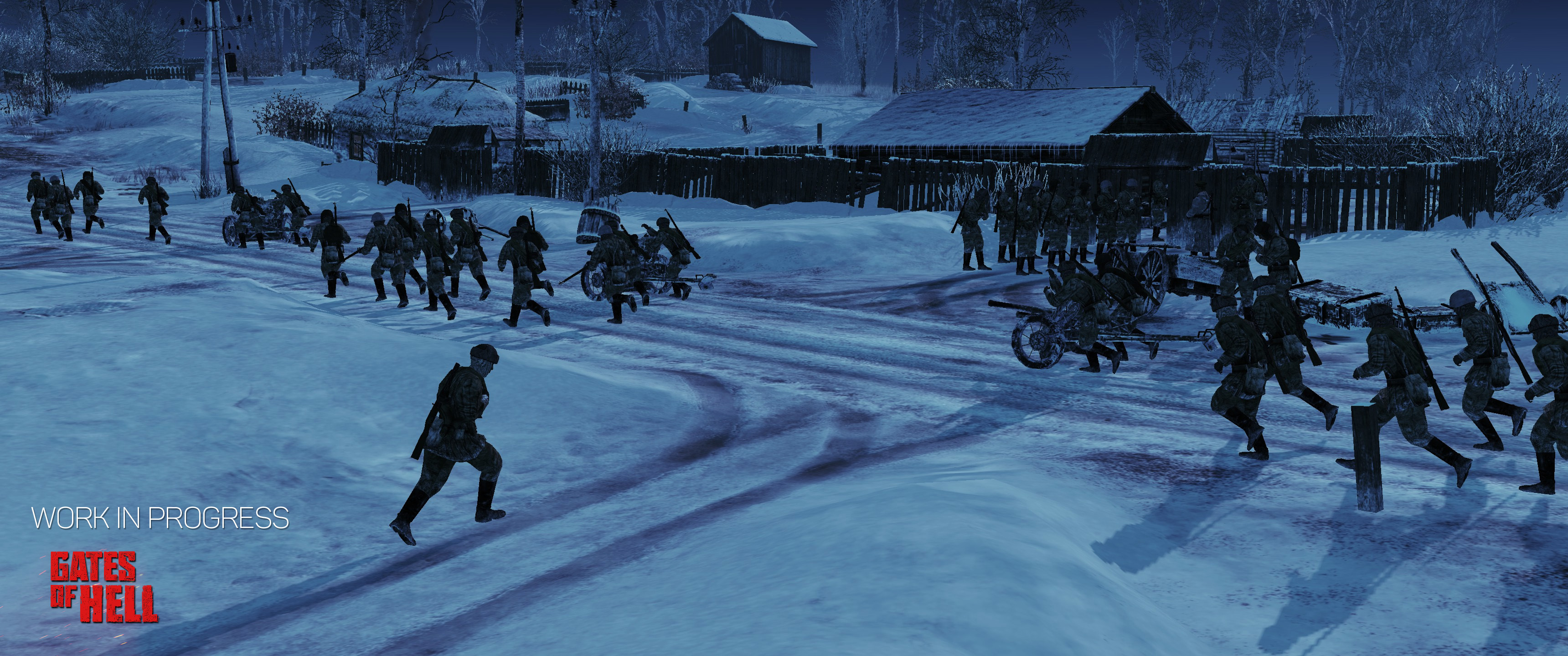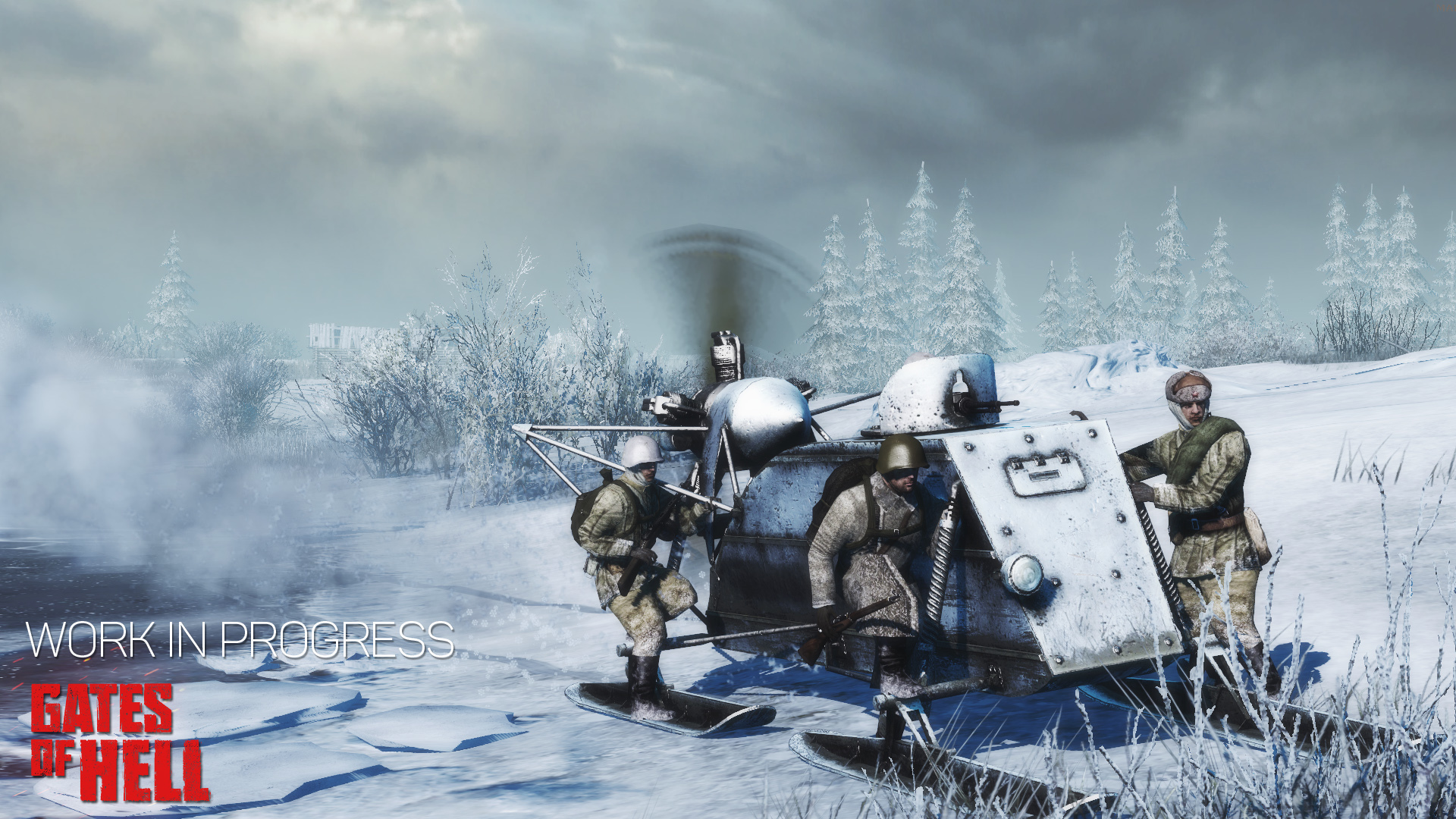Devblog #78: The nature of things
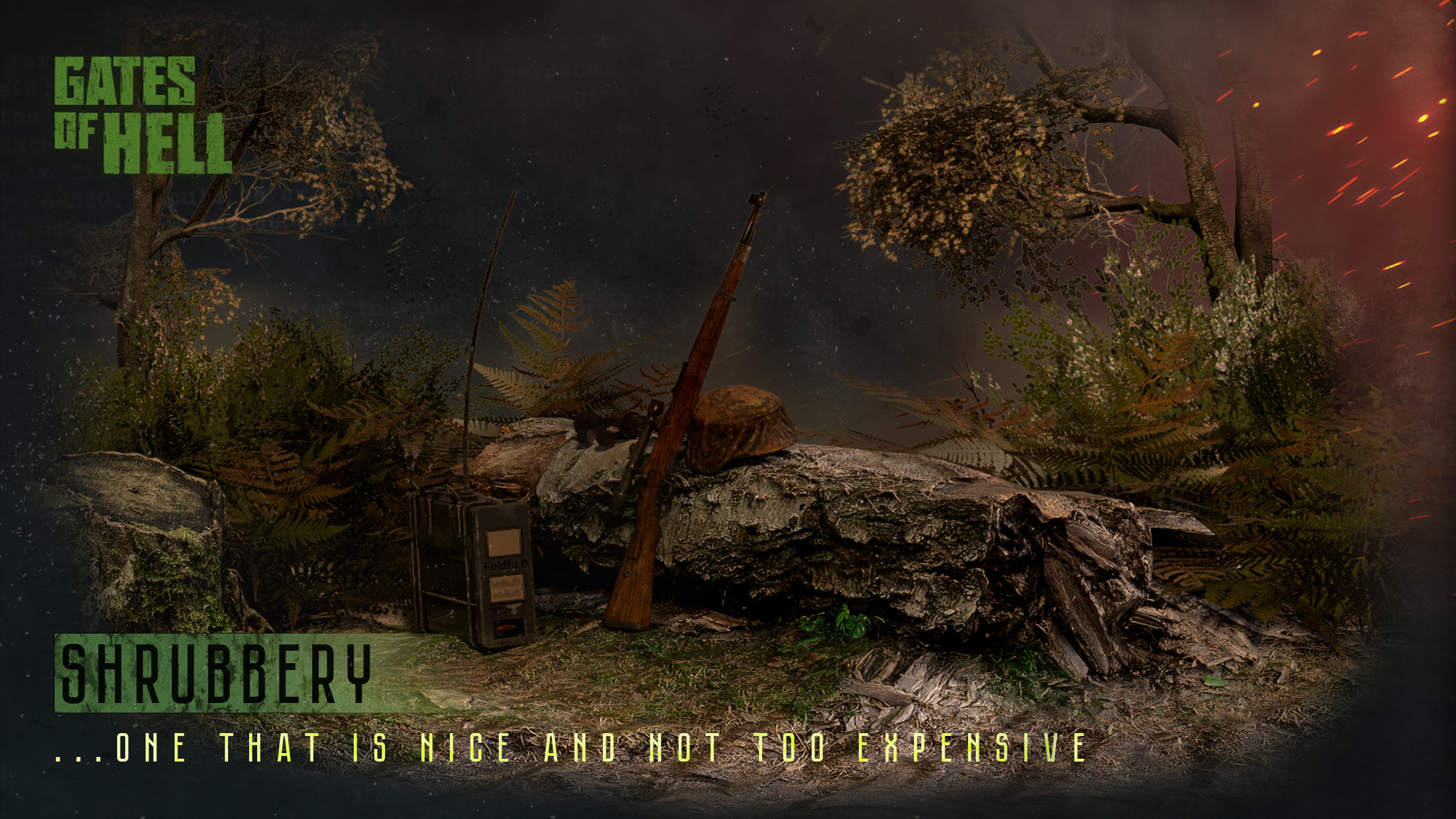 HD link
HD linkHi everyone, we have a special update for you.
For the first time, we want you to take a look at something other than vehicles, weapons and explosions; this one is about natural elements in Gates of Hell and how we plan for “the nature of things” to be 100% new. Remember, Gates of Hell is aimed at total realism and we don’t think anyone will ever feel the need to make a “realism mod” for it, because that would suggest that GoH does not follow the historical truth.
On to the story; in this update, we want to show you a different side to realism.
So we invite you to “stop and smell the flowers” in this issue, and have a look at trees, shrubberies, grass, forest and the like.
“We want a shrubbery” (The knights who say “Ni”)
Forest
Check these Panzergrenadiere; they are using the forest to remain hidden while approaching tanks passing by in the background. Notice how the screenshot shows plenty of trees but you can still see what's in front of you. As a result of this key decision in game design you can use all of the forest areas in GoH without too much vision penalty.
Another design feature is the number of different kinds of trees, which will be much larger than in any game you know. Also, we will only use trees that are particular to the countries we have maps for. Trees that are typically found in one country are not always present in another and we want it to look right. Currently we already have well over 100 different tree models ready.
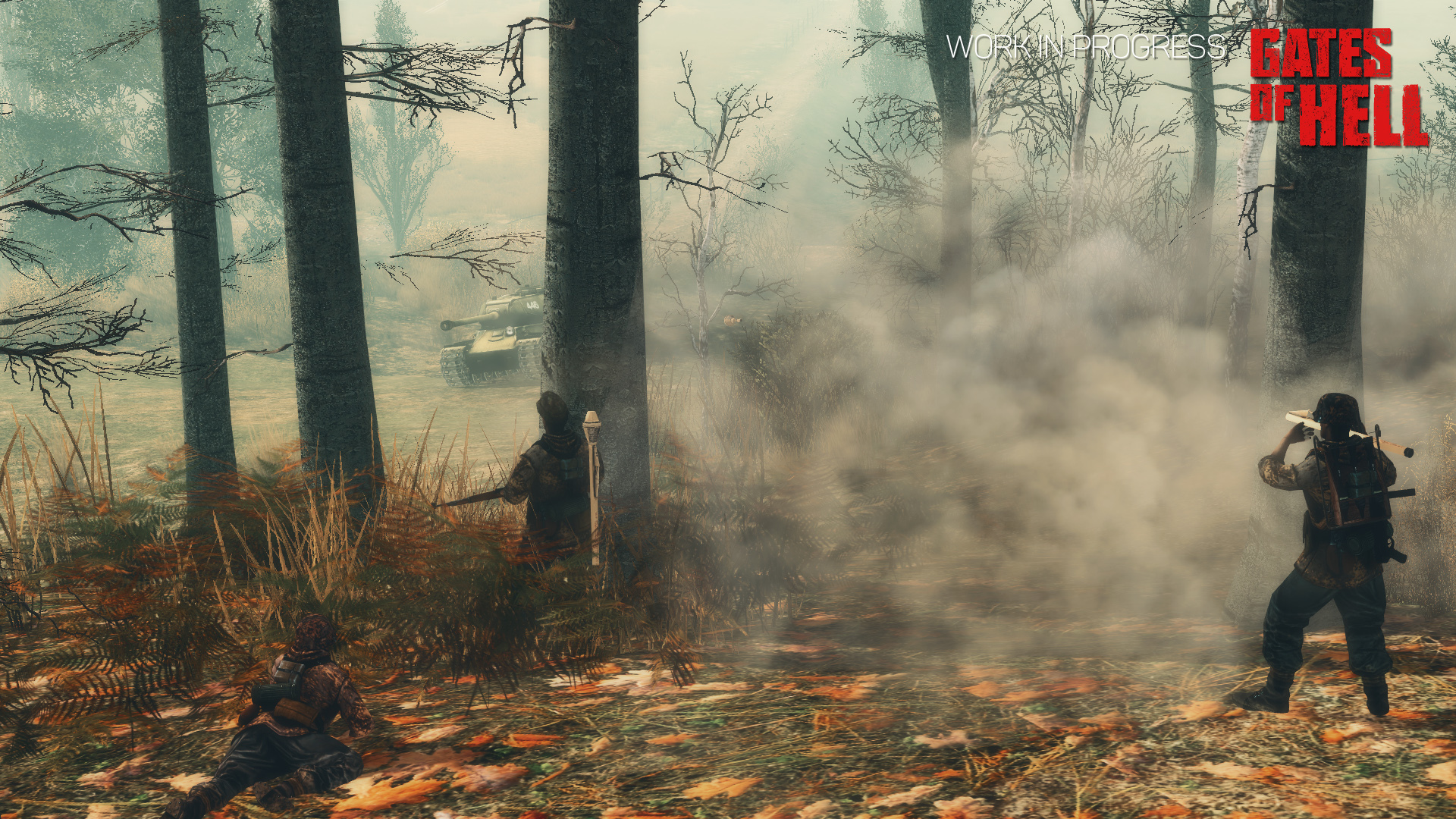 HD link
HD linkTree lines
 HD link
Not every treeline is a closed row of one single species of tree, just like it is in real life
HD link
Not every treeline is a closed row of one single species of tree, just like it is in real lifeMany games will offer you pretty good- looking trees in the game’s levels and in the in- game editor (which will also be featured Gates of Hell). In other games, the total number of different tree shapes will be limited and the kind of trees and bushes is not necessarily fitting for the environment.
For GoH maps, however, because they are based on real places and real history, we have also researched the natural look of the places we modeled. We made 3d models for the right kinds of bushes and trees for these maps.
 HD link
Not every forest has pine trees, and not every tree in the forest is healthy.
HD link
Not every forest has pine trees, and not every tree in the forest is healthy. Creeks, rivers and the sea
 HD link
We want creeks and small streams of water to look realistic. As in real life, the water level is not always at its maximum and instead a river bed may look more or less dry.
HD link
We want creeks and small streams of water to look realistic. As in real life, the water level is not always at its maximum and instead a river bed may look more or less dry. 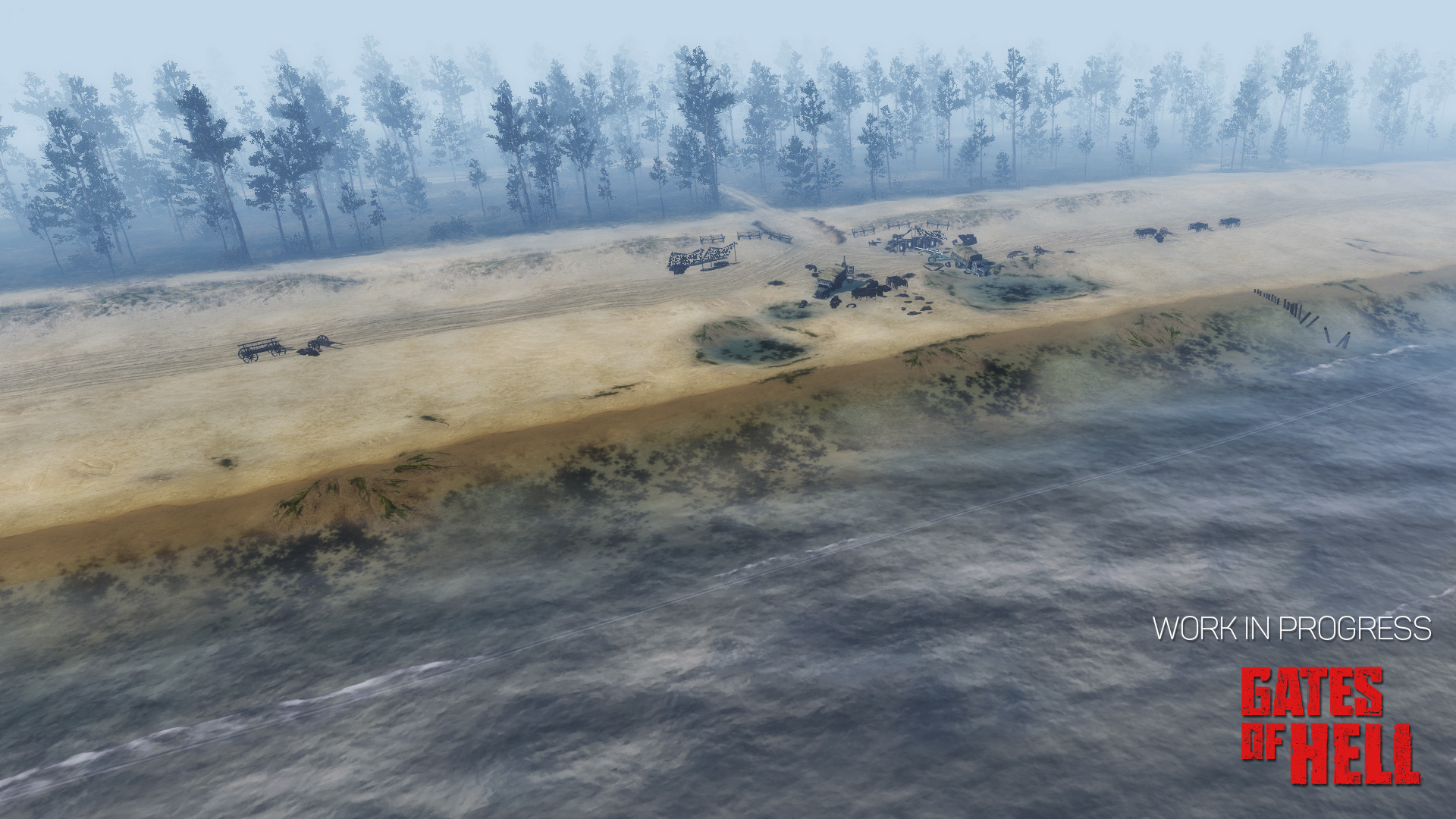 HD link
This seashore was modeled after the real thing. Note the wooden wave breakers on the floodline.
HD link
This seashore was modeled after the real thing. Note the wooden wave breakers on the floodline. Realism means: no compromise
Another important element in our landscaping is realism. We make maps based on real places and real stories. Having played other games where famous battles are portrayed in a map that is (at best) a caricature of the real place, you know that many map features have been put in to add cover, block lines of fire or whatever.
Not so in Gates of Hell; we want to show you what really happened during WWII. On our maps, you will find a really natural look. We can even challenge you to have a look at the real place in google maps/ google earth, you will see that our maps look like the real thing. Have a look at these screenies from our Vistula Spit map and see there is a road that runs straight through the forest, parallel to the beach. The side roads have different shapes every time. At one point, the forest slowly merges into a dune landscape. It would be easiest to make a forest with any old kind of road, which has a very clear- cut end where the dunes start. But we do not want it to be clear- cut, we want it to look real.
What else will be new:
- We have introduced tree/ wood splintering
- We have introduced trees that can’t be pushed over by tanks due to their sheer size, acting as natural obstacles - But they can be blown to pieces by artillery instead.
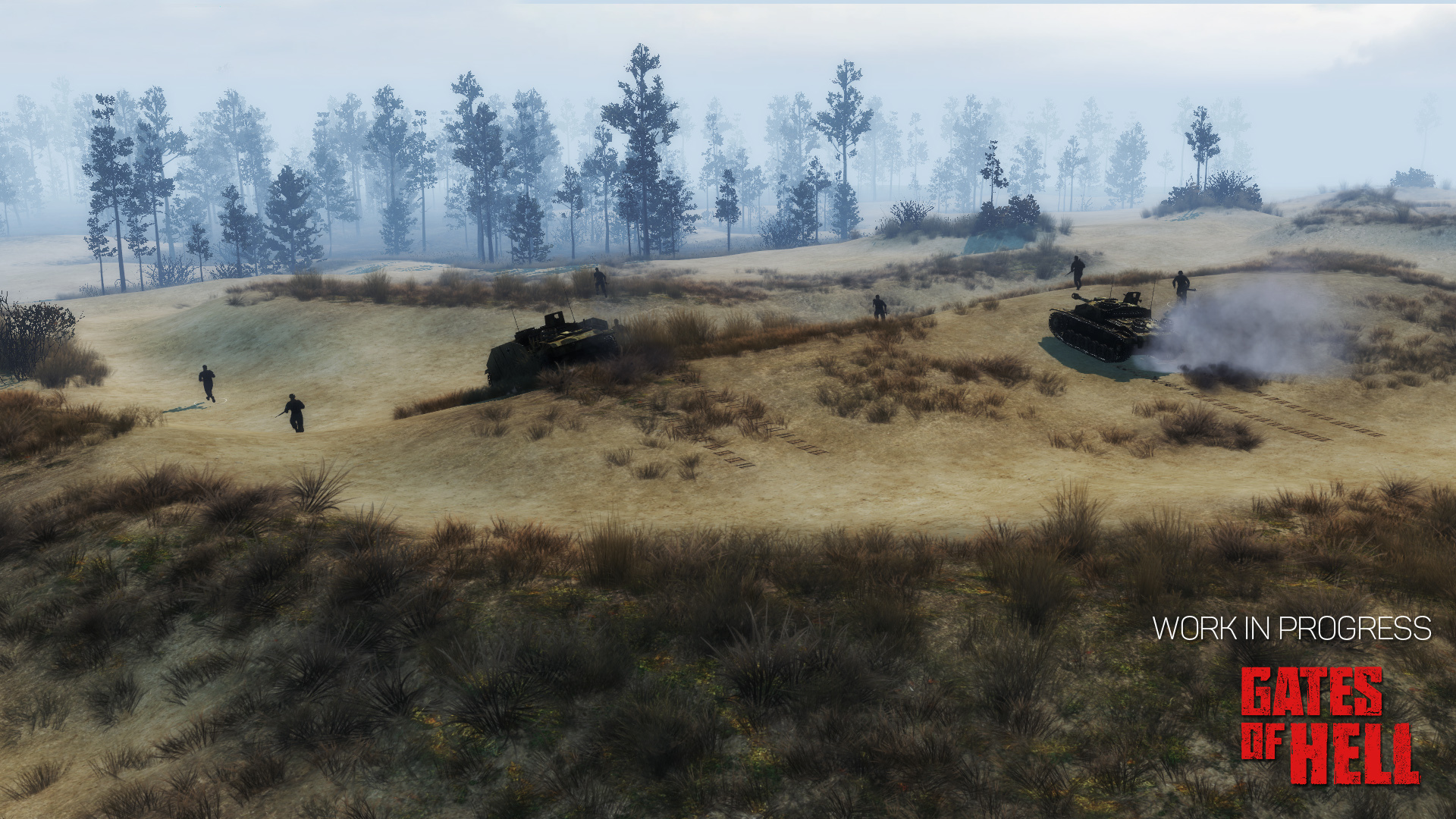 HD link
Forest slowly merging into dunes
HD link
Forest slowly merging into dunes So you see, we are working on a game that has massive immersion potential. Any modders will be able to work with oodles of material and, depending on the modder’s abilities (and willingness to spend time in the editor), you will see some nice variation everywhere.
Did you know?
- The university of Helsinki published a comprehensive study of the environmental history of WW2.
- According to BioScience, September 2008 / Vol. 58 No. 8, “Landscape-scale research has documented immediate battlefield effects as well as indirect impacts of war across landscapes. Water-filled bomb craters from the Battle of Britain were rapidly colonized by nearly 40 species of native plants and invertebrates (Warwick 1949).”
- According to ScienceDaily, “Bombing raids by Allied forces during WWII sent shockwaves through Earth's atmosphere big enough to weaken the electrified upper atmosphere (the ionosphere) above the UK, 1,000 km away.”
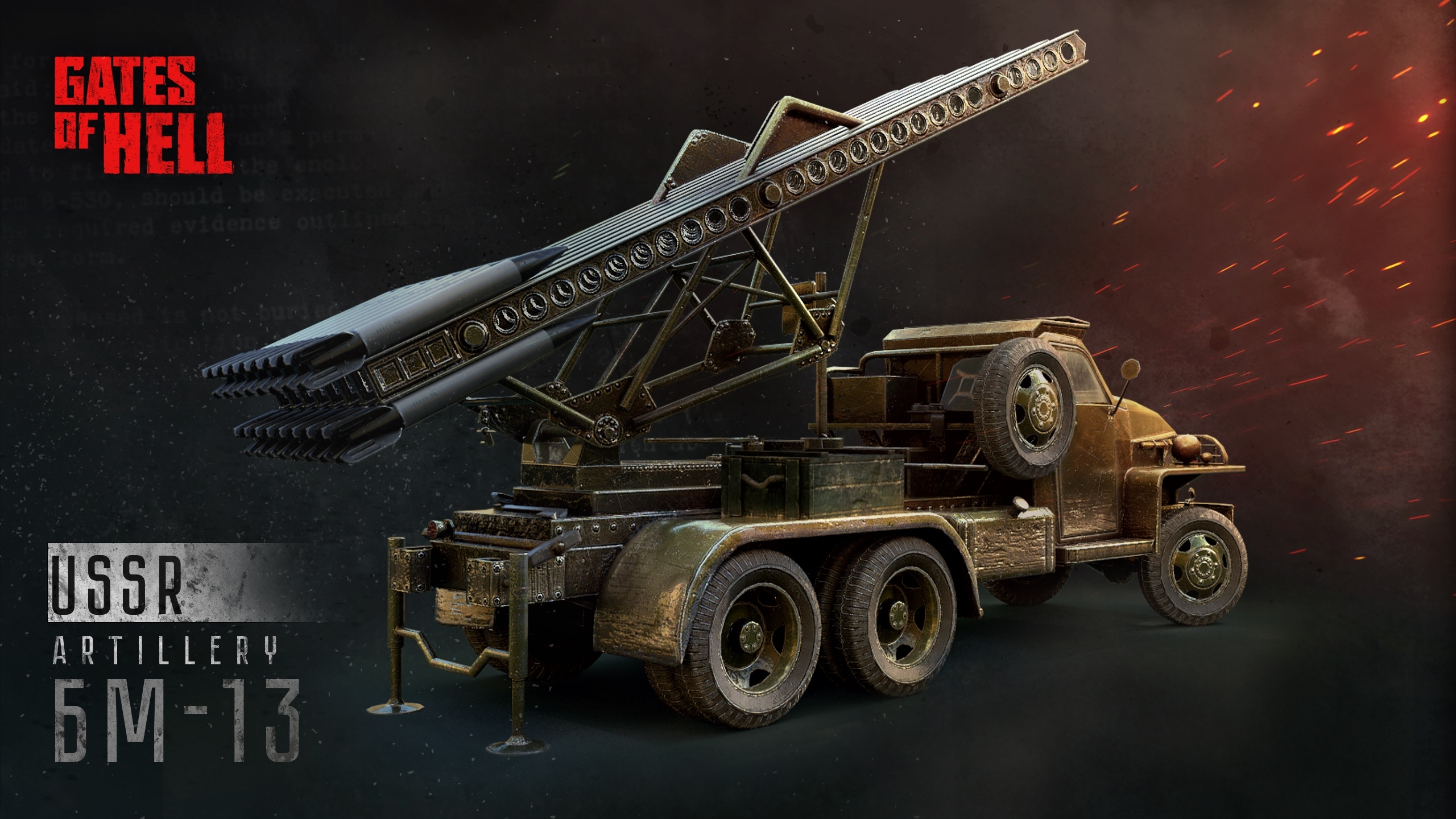
 M-13-16 (RS-132) on a ZIS-6 and M-8-24 (RS-82) on a T-40
M-13-16 (RS-132) on a ZIS-6 and M-8-24 (RS-82) on a T-40 This wintery Katyusha (BM-13N) just opened fire.
This wintery Katyusha (BM-13N) just opened fire.
